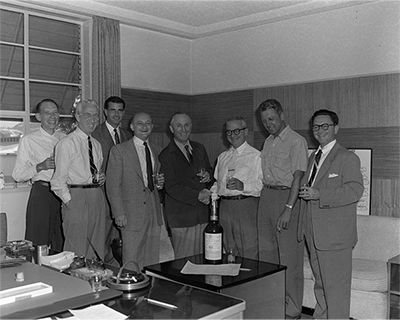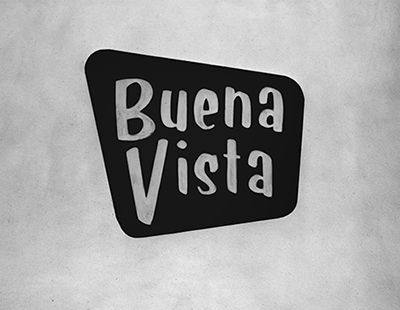
Roy had a knack for naming things. Simplicity and clarity appealed to him. The Disney Brothers Cartoon Studio of 1923 became The Walt Disney Studio in 1926, at Roy’s request. They incorporated in 1929, as Walt Disney Productions, Ltd. This switched to Walt Disney Enterprises in 1938. But Roy reconsidered the language. He took stock of how others perceived it. For him as for Walt, taking trouble to get something just right and chancing looking foolish while doing it were commonplaces. Roy addressed the subject of “Corporate Name” in a memo to Walt dated October 20, 1938. The memo reads:
“In our new corporate set-up we used the name ‘Walt Disney Enterprises,’ feeling at the time it was a mere comprehensive and all-inclusive name to fit all phases of our business. However, from every angle I have been getting the objections of people to the name, feeling it was of more value to us to stick to the old name of Walt Disney Productions; that it sounds less like a billion-dollar project—worldwide enterprise with a lot of money and power, while the Production name is less apt to give that impression, and also gives the thought of the primary purpose of our business. Also, as Kay [Kamen] points out, the licensees like the glamour of the picture business and for his purposes he, too, thought the Production name was better. [Hal] Horne was simply wild over the Enterprise company name, thinking it was entirely out of keeping.
“So, after talking with a number of people and listening to their comments and arguments, I have changed my opinion and think probably Production would be a better name for us. While there is some work involved in the change, and practically no expense, the only reason being that the change might look foolish to outsiders, I don’t think we should let this stop us. What do you think of this question of names?"
—Roy [typed, not signed]
The company’s reputation—its name, Walt’s name—spoke for itself. This may be implied in Roy’s policy about “Personal Business Cards” stated in a memo dated February 21, 1944. Roy’s philosophy comes about halfway through:
“For those who have some valid use of cards, I’m attaching to this memorandum the only types of cards which we will permit being used—that is, with the company name and the name of the individual, but no titles. Titles imply special authority where someone with a line of gab can sell the idea that he has special authority; therein lies the danger of business cards.”
He notes, “Gunther and I present ourselves as individuals associated with Walt Disney Productions.” Just as well. Gunther Lessing would have needed a large card to fit his titles. He was general counsel and, by 1942, Vice-President of the Board of Directors and Chairman of the Executive Committee. It’s possible that Roy projects this policy, in truth, to save on printing costs during World War II, but the logic fits in with the company traditions of sticking to basics and informality.

At times in the history of Walt Disney Productions, Roy realized he could not depend on film distributors to fathom the Studios’ unique promotional needs. Irving Ludwig was hired by Disney to handle Fantasound provisions of the initial release of Fantasia. Ludwig ended up President of Disney’s Buena Vista Distribution Company, Inc. He recalled Roy forming and naming that very subsidiary in 1953.
At the time, Howard Hughes owned RKO, which distributed the Disney films. That organization was troubled and uncomfortable about releasing the first feature-length True-Life Adventure, The Living Desert. “Roy said one day, ‘I think we better fend for ourselves.’” He gathered some of his staff. “Roy got Walt on the phone and said ‘Well, Walt, we’re all down here and ready to form a distribution organization. How do you feel about it?” Then they saw a big smile on Roy’s face. “He hung up and said, ‘All right, fellows, we’re in business.’”
The first question was what to name their distribution company. All sorts of names were proposed. Roy said, “What’s wrong with Buena Vista?” The studio lies along Buena Vista Street in Burbank, California.
Roy asked much the same question years later when Marty Sklar and John Hench made a presentation about the Florida project. For the contemporary style hotel on Bay Lake they devised the name Tempo Bay and pitched it to Roy. He replied, “What’s wrong with ‘Contemporary’?” He preferred this working title for the hotel. It remained.
There was another name on which Roy insisted: Walt.
Jennifer Hendrickson has worked for the Walt Disney Archives and in a former research office of The Walt Disney Family Museum. In Boston, she researched and wrote some scripts on musical topics for WGBH Public Radio.
Acknowledgements: Gratitude to Rebecca Cline, David R. Smith, Steven Vagnini, Kevin M. Kern, Michael Buckhoff, Jenn Berger, and Jeff Golden of the Walt Disney Archives for their generous assistance and expertise. Thanks also to Brianne Bertolaccini of The Walt Disney Family Museum, to Margaret Adamic of The Walt Disney Company, and to Paula Sigman Lowery.
Sources
“Irving Ludwig—A Giant in the Film Industry,” The Film Journal, Vol. 83, # 11, Nov 1980, p. 10.
Irving Ludwig interview with Bob Thomas, audio, May 19, 1995, 13 minutes in.
Irving Ludwig interview with Paula Sigman, transcript, Oct 28, 1980, p. 2.
Irving Ludwig interview with Bob Thomas, audio, 20 minutes in.
Marty Sklar, Dream It! Do It! My Half-Century Creating Disney’s Magic Kingdoms, Disney Editions, c2013, p. 152-153.
Note from Director Emeritus, Walt Disney Archives, David R. Smith.
